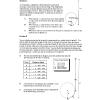当前位置:
X-MOL 学术
›
Phys. Rev. Phys. Educ. Res.
›
论文详情
Our official English website, www.x-mol.net, welcomes your feedback! (Note: you will need to create a separate account there.)
Graduate teaching assistants’ views of broken-into-parts physics problems: Preference for guidance overshadows development of self-reliance in problem solving
Physical Review Physics Education Research ( IF 3.1 ) Pub Date : 2020-05-22 , DOI: 10.1103/physrevphyseducres.16.010128 Melanie Good , Emily Marshman , Edit Yerushalmi , Chandralekha Singh
Physical Review Physics Education Research ( IF 3.1 ) Pub Date : 2020-05-22 , DOI: 10.1103/physrevphyseducres.16.010128 Melanie Good , Emily Marshman , Edit Yerushalmi , Chandralekha Singh

|
We examined physics graduate teaching assistants’ views about introductory physics problem “types,” i.e., different ways of posing the same underlying physics problem, within the context of a semester-long teaching assistant (TA) professional development course. Here, we focus on TAs’ views about two types of broken-into-parts problems that involve the same underlying physics scenario. One of these problem types does not involve explicit calculation, while the other does. The TAs were asked to list the pros and cons of these two types of broken-into-parts problems, rank them compared to other problem types (e.g., traditional textbook problem not broken-into-parts, context-rich problem, and multiple-choice problem) with the same underlying scenario in terms of their instructional benefit and the level of challenge they might produce for their students, and describe when and how likely they would be to use these types of problems in their own classes in different instructional situations if they had complete control of teaching the class. TAs reported that they found the broken-into-parts problem type to be the most instructionally beneficial out of all the problem types because of the guidance such problems offer, and would use a broken-into-parts problem type often and in a variety of ways (e.g., homework assignments, exams, and quizzes). While providing guidance to students is an appropriate instructional approach, our findings from interviews suggest that many TAs may be motivated to assign broken-into-parts problems out of a desire to make the problem-solving process easy and/or less stressful for students, especially because they felt that introductory students may not be capable of breaking a problem into subproblems on their own. The instructional benefits of gradually removing the scaffolding support to help students develop self-reliance in solving problems appeared to be overlooked by most TAs. In particular, in written responses or in interviews, most TAs did not mention a long-term goal of helping students develop more independence in problem solving for which one may start with broken-into-parts problems and gradually transition to problems that are not broken into parts. While the study findings that provide a snapshot of TA views in the middle and at the end of a TA professional development course may only apply to graduate TAs at a similar large university, at those institutions, professional development of TAs should take into account these findings and help TAs reflect on the important role that removing scaffolding support gradually and providing adequate challenge can play in helping introductory students develop self-reliance and become independent, expertlike problem solvers.
中文翻译:

研究生助教对破碎的物理问题的看法:指导的偏爱掩盖了解决问题中自力更生的发展
在为期一学期的助教(TA)专业发展课程的背景下,我们研究了物理研究生助教对入门物理问题“类型”的看法,即提出相同基础物理问题的不同方式。在这里,我们重点关注TA对涉及同一基础物理场景的两种类型的细分问题的看法。这些问题类型之一不涉及显式计算,而另一种则涉及显式计算。要求TA列出这两种类型的细分问题的优缺点,并与其他问题类型进行比较(例如,传统教科书中没有细分的问题,内容丰富的问题,和多项选择题)在教学上的益处和他们可能给学生带来的挑战程度方面具有相同的基础情景,并描述了他们何时以及如何在不同班级的班级中使用这些类型的问题教学环境中,如果他们完全控制了课堂教学。TA表示,由于此类问题提供的指导,他们发现在所有问题类型中,分解成问题的类型是最有指导意义的,并且会经常使用分解成问题的类型方式(例如,作业,考试和测验)。为学生提供指导是一种适当的教学方法,我们从访谈中得出的结果表明,许多TA可能出于出于使问题解决过程变得容易和/或减轻学生压力的愿望的动机来分配细分问题,尤其是因为他们认为入门学生可能没有能力将问题自己分解为子问题。大多数助教都忽略了逐步取消脚手架支持以帮助学生发展解决问题的自力更生的教学效益。特别是,在书面答复或面试中,大多数助教没有提及帮助学生在解决问题上获得更大独立性的长期目标,为此,他们可以从零散的问题开始,逐步过渡到未分解的问题。分成几部分。
更新日期:2020-05-22
中文翻译:

研究生助教对破碎的物理问题的看法:指导的偏爱掩盖了解决问题中自力更生的发展
在为期一学期的助教(TA)专业发展课程的背景下,我们研究了物理研究生助教对入门物理问题“类型”的看法,即提出相同基础物理问题的不同方式。在这里,我们重点关注TA对涉及同一基础物理场景的两种类型的细分问题的看法。这些问题类型之一不涉及显式计算,而另一种则涉及显式计算。要求TA列出这两种类型的细分问题的优缺点,并与其他问题类型进行比较(例如,传统教科书中没有细分的问题,内容丰富的问题,和多项选择题)在教学上的益处和他们可能给学生带来的挑战程度方面具有相同的基础情景,并描述了他们何时以及如何在不同班级的班级中使用这些类型的问题教学环境中,如果他们完全控制了课堂教学。TA表示,由于此类问题提供的指导,他们发现在所有问题类型中,分解成问题的类型是最有指导意义的,并且会经常使用分解成问题的类型方式(例如,作业,考试和测验)。为学生提供指导是一种适当的教学方法,我们从访谈中得出的结果表明,许多TA可能出于出于使问题解决过程变得容易和/或减轻学生压力的愿望的动机来分配细分问题,尤其是因为他们认为入门学生可能没有能力将问题自己分解为子问题。大多数助教都忽略了逐步取消脚手架支持以帮助学生发展解决问题的自力更生的教学效益。特别是,在书面答复或面试中,大多数助教没有提及帮助学生在解决问题上获得更大独立性的长期目标,为此,他们可以从零散的问题开始,逐步过渡到未分解的问题。分成几部分。


























 京公网安备 11010802027423号
京公网安备 11010802027423号